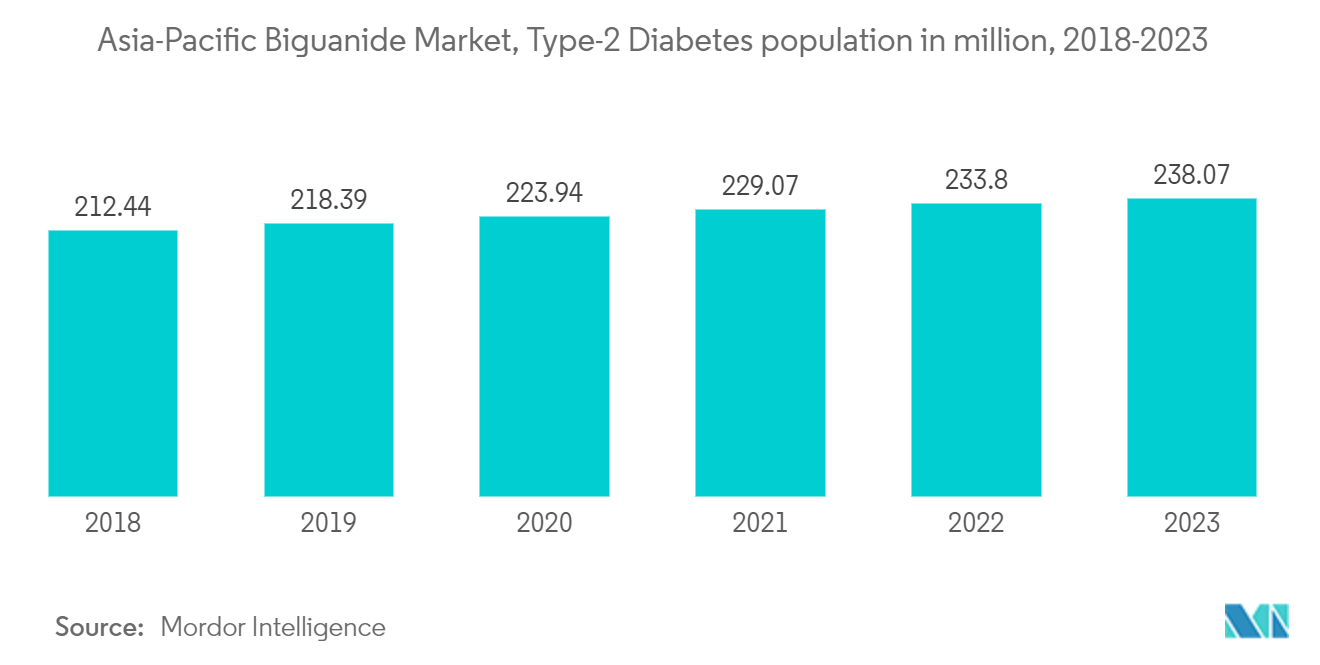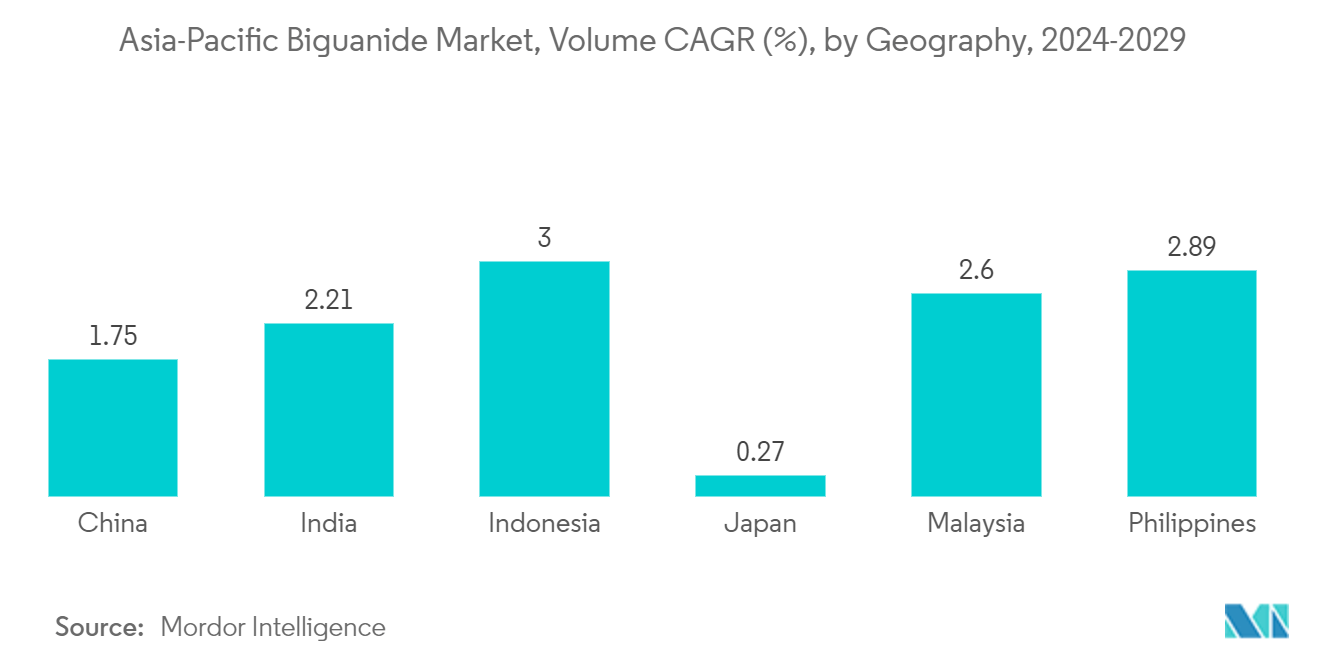Market Trends of APAC Biguanide Industry
Rising diabetes prevalence
The diabetes population in the Asia-Pacific region is expected to rise by more than 1% over the forecast period.
The Asia-Pacific region has witnessed an alarming increase in the prevalence of diabetes in recent years. In developing countries such as China and India, the rate of diabetes is at an all-time high, mainly due to lifestyle changes. Approximately 90 million adults in the IDF South-East Asia Region had diabetes, according to the International Diabetes Federation. The number of people with this condition is expected to rise to 152 million by 2045, and the 206 million adults in the IDF Western Pacific Region who had diabetes will likely reach 260 million by 2045.
Metformin is typically the first medication used in the treatment of type-2 diabetes due to its wide range of efficacy, safety, and mechanisms of action. Metformin and other anti-diabetic drug combinations have a low risk of hypoglycemia, provide beta cell protection, offer cardio-renal benefits, and are safe for patients with kidney or liver conditions and senior citizens.
In July 2022, Zydus Lifesciences announced that it had received final approval to market empagliflozin and metformin hydrochloride tablets in multiple strengths. Empagliflozin and metformin hydrochloride tablets are used with proper diet and exercise to improve glycemic control in adults with type-2 diabetes mellitus. They are also used to lower the risk of cardiovascular death in patients with type-2 diabetes mellitus and established cardiovascular disease.
Owing to the rising rate of obesity, the growing genetic factors for type-2 diabetes, the increasing prevalence, and the aforementioned factors, it is likely that the market will continue to grow.

China holds the highest market share in the Asia-Pacific Biguanide Market in the current year
China holds the highest market share in the Asia-Pacific biguanide market and is expected to register a CAGR of around 2% over the forecast period.
China has been recognized as a potential developing market due to the growing diabetic population in this region. It is a mature market with some associated challenges, like slow economic growth, an aging population, and increased competition. The country is witnessing a significant increase in the number of generic drug manufacturers.
Furthermore, the leading global players in the market studied are facing intense competition from regional players. In this region, there is a growing preference for oral anti-diabetics among type-2 diabetic patients. The high prevalence of type-2 diabetes is associated with a significant economic burden. The costs of diabetes are increased in patients with comorbidities such as hypertension and hyperlipidemia and in patients who develop complications. Costs increase with an increasing number of complications.
Diabetes reduces lifespan, and people with the disease are likely to experience blindness and be hospitalized for amputations, kidney failure, heart attacks, strokes, and heart failure. The first-line therapy used in patients with T2DM is metformin monotherapy. When metformin is contraindicated or not tolerated, or when treatment goals are not achieved after three months of use at the maximum tolerated dose, other options need to be considered. Dipeptidyl peptidase-4 (DPP-4) inhibitors, sodium-glucose cotransporter-2 (SGLT-2) inhibitors, and glucagon-like peptide-1 (GLP-1) agonists are newer drugs for diabetes mellitus. They are usually used with metformin to treat diabetes.
Owing to the aforementioned factors, the market is expected to grow during the forecast period.



